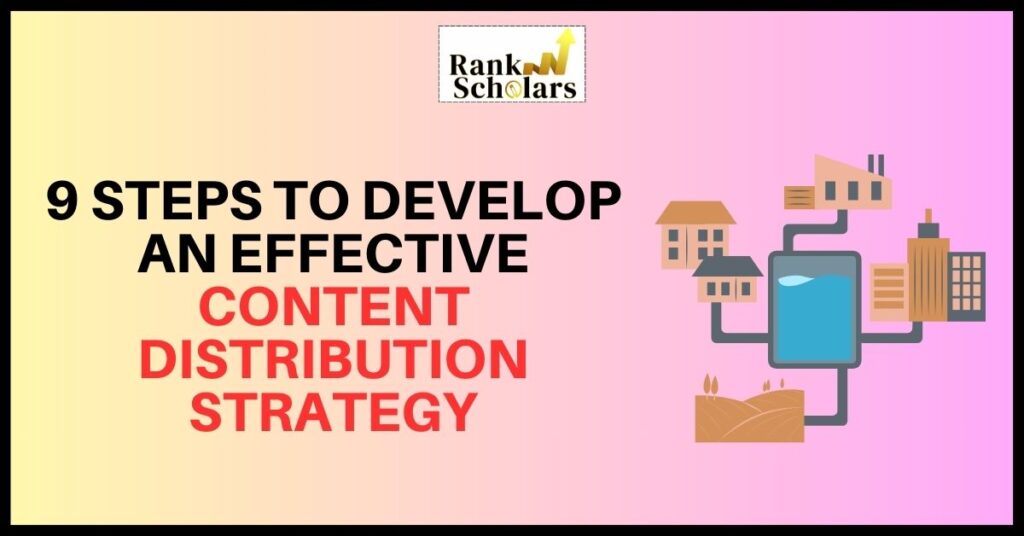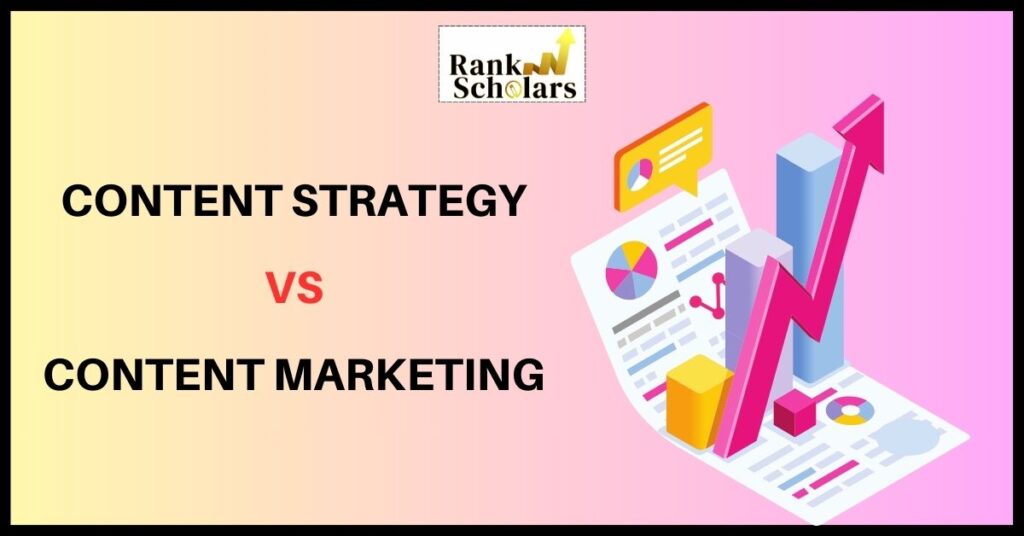“It’s not the best content that wins. It’s the best-promoted content that wins.” – Andy Crestodina
You’ve written a valuable piece of content that is worth a treasure to your reader’s time. But, what good is that treasure if nobody knows where to find it? That’s where this content distribution strategy guide comes in.
This blog can help you make your content discoverable in the simplest way possible. By the end of this blog, you will be well-equipped with the necessary knowledge to plan your first effective content distribution strategy.
What is a Content Distribution Strategy?
A content distribution strategy is like a GPS, guiding your audience to its designated audience. It refers to leveraging various content distribution channels to promote content. An effective strategy can attract your target audience and drive more traffic.
You can develop this strategy by setting a content distribution goal and executing it effectively. It is about placing your content in a way that reaches the audience who can relate to it. Let’s see how a content distribution strategy can help you.
How Does a Content Distribution Strategy Help?
Now, you will learn how a content distribution strategy can transform your content game and elevate your content reach.
Expanded Audience Reach
An effective content distribution strategy expands your reach significantly. Developing a strategy for different social media platforms optimizes your content to reach the right audience at the right time. It generates more traffic and hence drives more sales.
Increased Visibility
Your content needs to stand out among others in the vast world of information. It would help to refine the content distribution strategy to increase your content visibility. You can do this by using different social media channels, and newsletters to increase the chances of your content getting noticed.
Brand Authority
Developing a content marketing strategy builds your brand authority. You position your brand as a trustworthy source by sharing valuable content consistently. This also comes with additional respect and loyalty from your target audiences.
Improved Engagement
Engagement is the ultimate goal key of an effective content strategy. When you connect with the right audience at the right time, you encourage them to interact with your content. Interactions such as likes, comments, and shares build a community of your own.
Also Read: Digital Marketing vs. Content Marketing: What’s the Difference?
Content Distribution Channels
Content distribution channels are the pathway to your target audience that executes your bomb strategies. These channels may be suitable according to the type of content you create.
Here, we have divided the channels into two sub-categories: Paid and Free content distribution channels.
Paid Content Distribution Channels
1. Pay-Per-Click (PPC) Advertising
With PPC advertising, you must pay every time someone interacts with your ad. These ads can appear anywhere like search engine results pages (SERPs), social media platforms, or websites. PPC helps you target your reach and narrow down your audience.
2. Social Media Adevertising
Social media advertising is the most common form of advertising where most people are active. Platforms like Facebook, Twitter, Instagram, LinkedIn, and other platforms offer paid advertising options to increase your content reach.
The best thing about these platforms is you can run customizable ads on your page based on demographics, interests, age, or behavior This helps you to promote your content to the right people.
3. Influencer Partnerships
Influencer partnerships are an effective and easy way of promoting your content. It leverages the popularity and fan following of the influencer in your favor. Influencers create content for you on their pages, via sponsored posts, videos, or stories featuring you. This enhances the engagement and visibility of the brand.
Free Content Distribution Channels
Now, let’s move on to the best content distribution channels.
1. Social Media
Social media is the most commonly used channel for content distribution. It is a great way to share and promote your content for free. Different social media platforms like Facebook, Instagram, Twitter, and Linkedin allow you to post content regularly.
These platforms let you post different content formats like videos and photos. Here, you can build relationships with your target audience by sharing valuable content. You can use analytics tools to analyze the performance of your content.
2. Email Newsletters
Email newsletters are a more direct way to reach your target audience. They allow you to send regular updates about your brand to your audience’s inbox. You can leverage this tool to share any happenings, offers, content, and news. It helps you stay freshly connected with your audience.
3. Blog Posts
Blogs hold your opinions and expertise for your audience. You can write blog posts on the topics that matter to your business and publish them on your websites. It attracts your target audience and positions you as an authority in your business.
4. Website
Your website is like your online store. This is a place where you’ve put together everything you offer. People visit your website to understand more about your brand. On your website, you can showcase anything that convinces your audience to associate with you. It could be services, testimonials, offers, or more.
9 Steps to Create a Content Distribution Strategy
This is where you’ll learn exactly how to create a content distribution strategy for your brand. Here is a step-by-step guide to help you out.
1. Understand Your Target Audience
This is the most important step – Researching your target audience. This step forms the foundation of an impeccable strategy. Even an amazing strategy can fall apart without detailed research of your target audience.
The research involves understanding your audience’s demographics such as gender, age, location, income, profession, and education level. You must dig deeper into their psychographics, content consumption habits, interests, values, hobbies, and especially pain points.
You can conduct this research by leveraging surveys, questionnaires, and interviews, and doing market research to understand your audience.
2. Analyse Your Previous Content
It is essential to analyze your content in the past. You must analyze them to understand if your existing content strategy is working for you or not.
You can look into factors like bounce rate, website traffic, engagement, time on page, and conversion rate. You can find out which content formats, topics, and distribution channels work for you and your audience.
3. Identify Content Distribution Channels
After researching, you must find the platforms where your audience is most active. It could be a single channel or a mixture of multiple channels.
This includes several platforms like Instagram, Facebook, Twitter, LinkedIn, YouTube, online communities, newsletters, podcasts, and many more. You must ensure your chosen channels align with your audience’s preferences.
4. Identify Content Types
A single content type may not resonate with everyone. Once you have sorted out the distribution channels, you must detect the content type you need to create according to your audience’s interests.
The most commonly used content types are blogs, videos, podcasts, articles, and newsletters. You need to keep updating and experimenting with your content formats to find out what works best for your audience.
5. Set Content Distribution Goals And KPIs
You need to set SMART goals to help you understand the direction you are in and what can be the outcome of it. These goals set the benchmark for your success.
SMART goals are the abbreviated version of specific, measurable, attainable, relevant, and time-bound goals. For example,
- Specific: Increase your customer satisfaction rate by updating the customer service system and solving common problems identified in feedback.
- Measurable: Increase the customer satisfaction percentage from 60% to 70%.
- Attainable: If the customer satisfaction rate is already at 60%, then 60-70% is a realistic goal.
- Relevant: Increasing the percentage will build a stronger customer base and will create a word-of-mouth marketing strategy for the new product line.
- Time-bound: We’d achieve the above goals within the next 3 months.
6. Make an Editorial Calendar
An effective content distribution strategy requires consistency and planning. For this, you need an editorial calendar. It helps you and your team work together on common goals. Creating an editorial calendar sets an outline for content distribution. It helps you track when and where a piece of content will go live.
You can use a content calendar tool or a spreadsheet to schedule your content and make sure not to miss a deadline. By planning ahead of time, you can create a smooth flow of content with an identity.
7. Create Content
This is where you have to utilize the data you have gathered in your research process and use it for creating the content. Make sure it resonates with your target audience, adds value, and solves problems while targeting their pain points.
8. Distribution And Marketing
Promoting your content is just as crucial as creating it. You can market your content across the chosen distribution channels to ensure a higher visibility rate.
The key is to leverage a multichannel approach that is a mix of owned, earned, and paid channels. Tailor your content in a way that fits the platform and your audience’s needs. You can use social media ads, email marketing, influencer marketing, and SEO to further expand your content reach.
9. Measure Results
Regularly monitor the performance of your content to know what works for you and what doesn’t. Measure the website traffic, ROI, conversion rate, bounce rate, and social media engagement. This is the stage where you examine if your SMART goals are being met or not.
Use the Google Analytics tool or your social media insights to track the behavior of your content. Track your results consistently to improve your strategy with time.
Also Read: How Content Marketing Is Changing the Game For Businesses
5 Content Distribution Tools

Now, let’s talk about the tools that can immensely help you distribute your content. Here are 5 tools to streamline your content distribution process.
1. Hubspot
Hubspot is a marketing and sales platform that offers several tools to attract visitors and customers. It includes analytics, email marketing, content creation, scheduling content, content distribution, and SEO.
2. PR Newswire
PRNewswire provides news distribution and multimedia communications services. It helps you with distributing press releases and relevant news to journalists, bloggers, and consumers.
3. HARO (Help a Reporter Out)
HARO is a tool that helps a journalist and sources connect. Through HARO, a business or an individual can respond to media queries sent to them. They can provide insights and expertise on various topics. This increases your visibility, positions you as a thought leader, and attains media coverage for the brand.
4. Medium
Medium is a platform that invites bloggers and content creators to share content worldwide. Medium provides you with a large network of readers and publishers. So, by posting here, you can skyrocket the reach of your content.
5. GaggleAMP
GaggleAMP is a social media amplification tool. It utilizes your employee’s social network which helps businesses increase their brand visibility and generate leads.
It allows the employees to review the content or allow it to be posted directly to their network. Through GaggleAMP, you can track analytics and update your strategy.
Content Distribution Strategy – Frequently Asked Questions

Falguni, an introverted poet turned freelance writer, crafts stories that speak to the heart with simplicity and grace.



